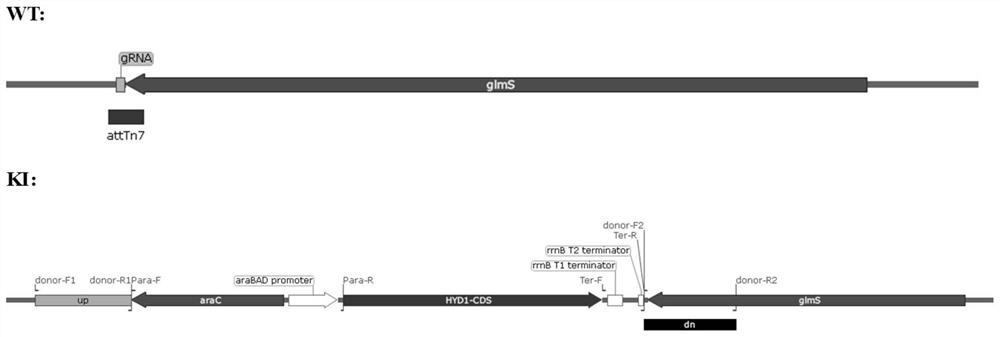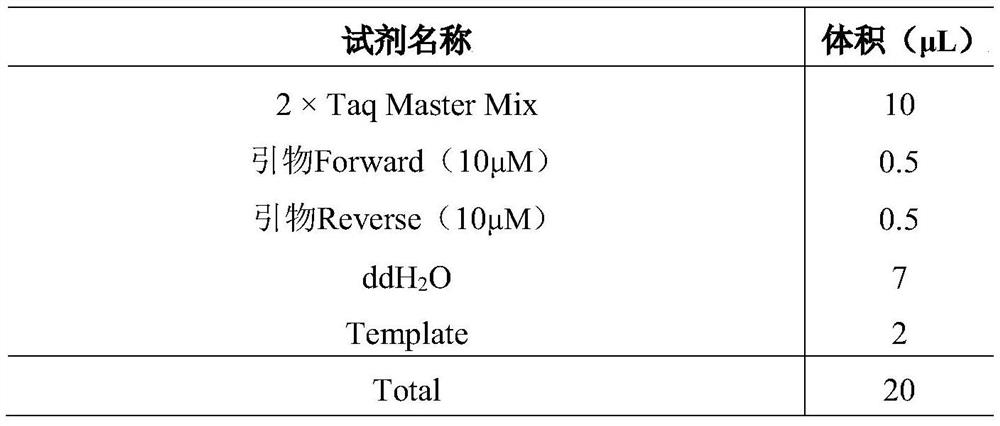Recombinant escherichia coli and hydrogen production application
A technology for recombining Escherichia coli and Escherichia coli, used in applications, recombinant DNA technology, bacteria, etc.
- Summary
- Abstract
- Description
- Claims
- Application Information
AI Technical Summary
Problems solved by technology
Method used
Image
Examples
Embodiment 1
[0018] Example 1 Construction of recombinant Escherichia coli containing [FeFe]-hydrogenase gene and phosphofructokinase isoenzyme I gene
[0019] 1. Resistance test
[0020] Escherichia coli BL21 (DE3) were streaked on LB solid plates of commonly used antibiotics (such as Amp, Kana, Chl and Str), cultured overnight in a constant temperature incubator at 37°C, and the next day was observed for colony growth, such as Some are judged to be insensitive to the antibiotic, and vice versa. Escherichia coli insensitive to antibiotics kana and Str were obtained.
[0021] 2. Construction of CRISPR-B Plasmid
[0022] Taking Chlamydomonas reinhardtii [FeFe]-hydrogenase gene hyd1 as the main body, using araBAD promoter to drive the expression of hyd1 gene, using two terminators rrnB T1terminator and rrnB T2 terminator to terminate the expression of hyd1 gene . like figure 1 shown in KI. The final knock-in nucleotide sequence is shown in SEQ ID No.1. The knock-in sequence and the ho...
Embodiment 2
[0042] Example 2 Application of Recombinant Escherichia coli Hydrogen Production
[0043] A solid medium was prepared, and agar powder was added to the LB medium containing 50 μg / mL karamycin to prepare a solid medium. The thawed activated recombinant E. coli was inoculated into LB solid medium. Incubate overnight in a 37°C incubator.
[0044] The single colony recombinant Escherichia coli grown in LB solid medium was inoculated into LB medium containing 50 μg / mL karamycin, and expanded in a constant temperature incubator at 37°C.
[0045]The expanded recombinant E. coli was inoculated into 200 ml of hydrogen-producing medium containing 50 μg / mL karamycin. The hydrogen-producing medium contained 1.6 parts tryptone, 1 part yeast extract and 0.5 part sodium chloride, and 2 parts sucrose was added. , the pH value of the hydrogen production medium was 6.0, and 27 mL of hydrogen was generated within 8-48 h of incubation in a constant temperature incubator at 37 °C.
PUM
 Login to View More
Login to View More Abstract
Description
Claims
Application Information
 Login to View More
Login to View More - R&D
- Intellectual Property
- Life Sciences
- Materials
- Tech Scout
- Unparalleled Data Quality
- Higher Quality Content
- 60% Fewer Hallucinations
Browse by: Latest US Patents, China's latest patents, Technical Efficacy Thesaurus, Application Domain, Technology Topic, Popular Technical Reports.
© 2025 PatSnap. All rights reserved.Legal|Privacy policy|Modern Slavery Act Transparency Statement|Sitemap|About US| Contact US: help@patsnap.com



